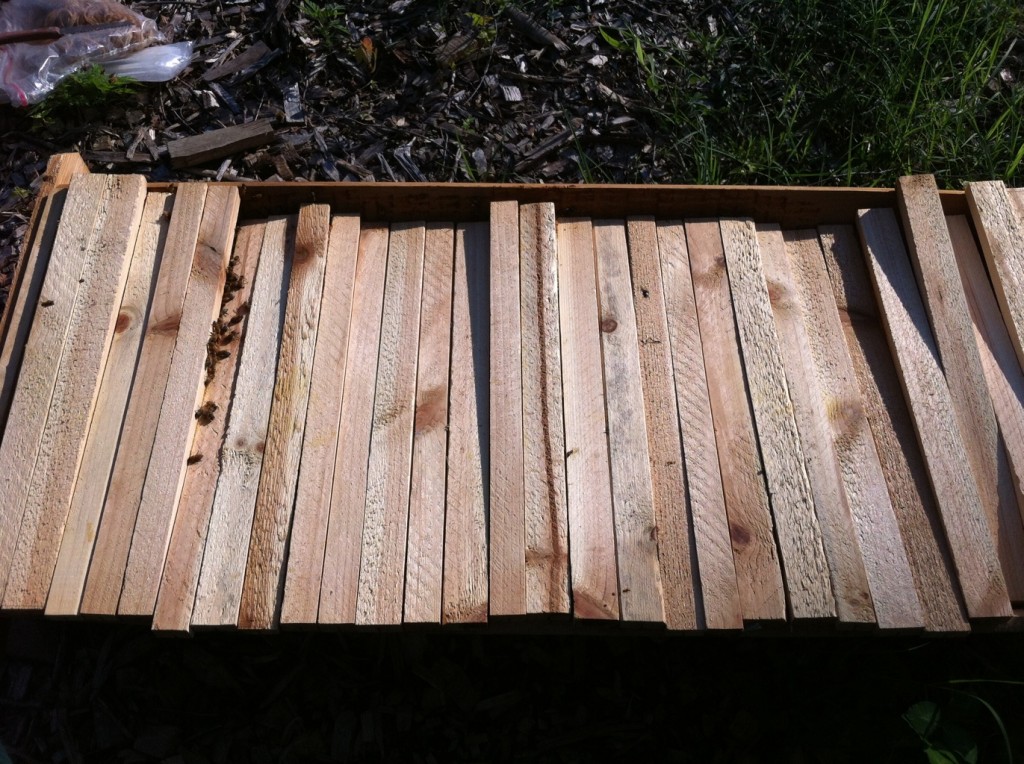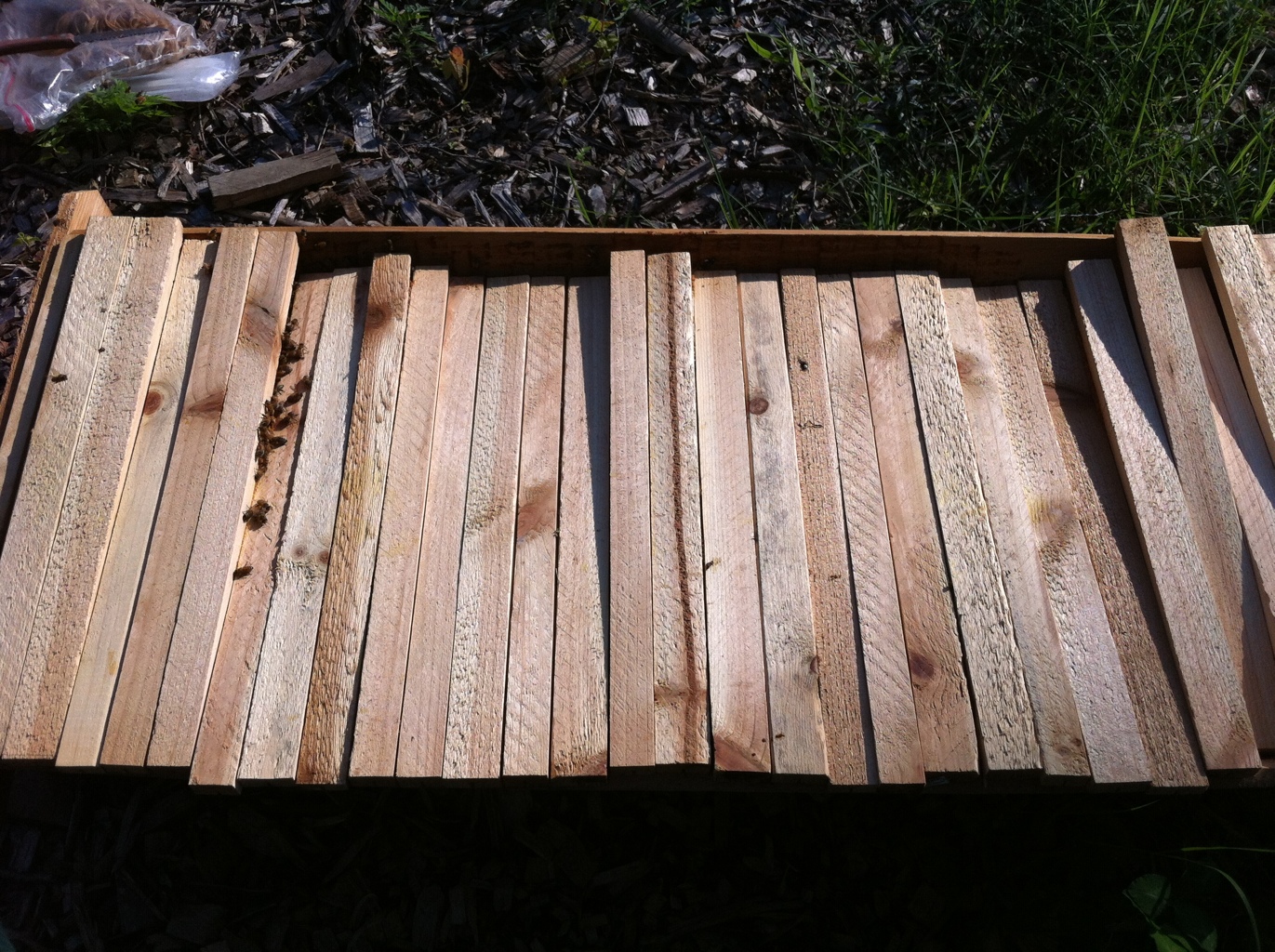
I’m still paying the price for a choice I made in preparation for spring…I thought I’d found a terrific and inexpensive material from which to build this year’s top-bar hives.
I built about 10 hive bodies from rough-cut cedar fencing…the cedar fencing isn’t too expensive, and I love the way it looks and feels. I thought it was perfect for the bees.
Immediately, however, once we all installed our bees in the newly-built hive boxes, we discovered the first problem with the cedar fencing: It’s very light…which makes it good when it comes to handling the hive boxes, but bad when the wind picks up. So, when the winds blew and before the bees had built enough comb to give the hive weight, the hives toppled over. Toppled hives all over town. Not good for bees. Not good for the beekeeper’s psyche, either.
Later in the season, when the bees increased in number and after they’d built comb and stored brood and honey, another problem raised its ugly head: The top board of cedar siding began to bow under the weight of bee life. This creates two unwanted situations:
- It created a gap between the bottom and the top side boards…and the bees quickly begin using this gap as an entrance. And, for reasons I’ll explain in another post, we want the bees to use an entrance at the end of the hive bodies…not in the middle (this relates to the location of honey when the bees cluster over winter…see why I’m not going into it now?!).
- When the sides of the hive bow outward, the bars that rest on the top board slip into the hive.
- Which means the honeycomb rests and melts on the bottom of the hive box.
- Bees never intentionally attach comb at the bottom…they use that space for travel (and other things).
- And when the comb melts to the bottom of the hive, the beekeeper has to rip it apart to remove and inspect it. Not good
Therefore, this situation must be rectified.
I’ve figured out a solution to the problem, but it requires visiting each of the affected hives and, hive by hive, replacing the flimsier cedar siding with more substantial cedar. I’ve learned to perform this operation on the spot (though it does require moving the bees temporarily into another hive body).
At first, I was kicking myself for having to go around and repair all those hive bodies when I thought I had other, more-pressing business to do. But now I simply see it as the price to pay for becoming more aware. It’s also a terrific opportunity to see the bees with my customers and my friends.
And it’s good to do whatever is required to make something right…so people know that if I make a mistake, I’ll fix it.

